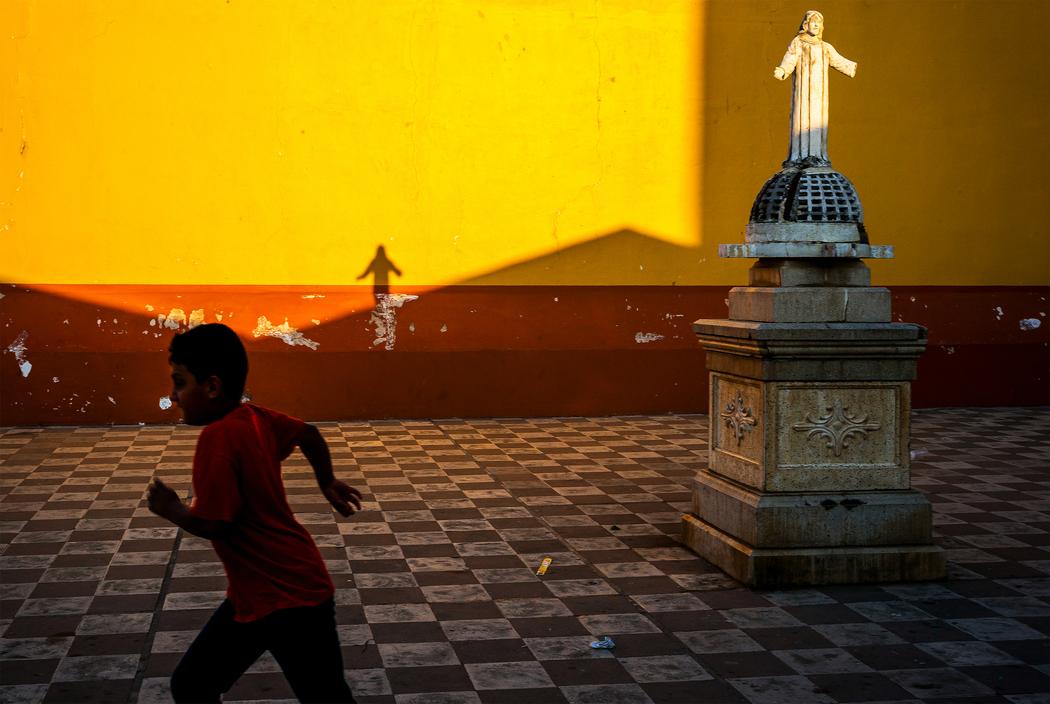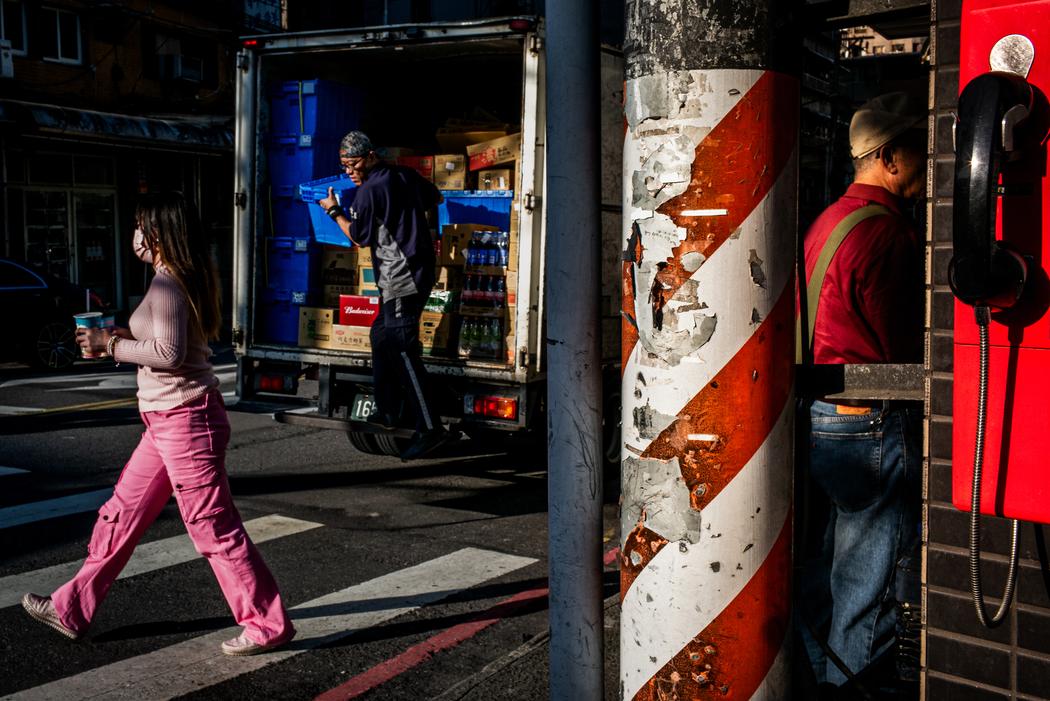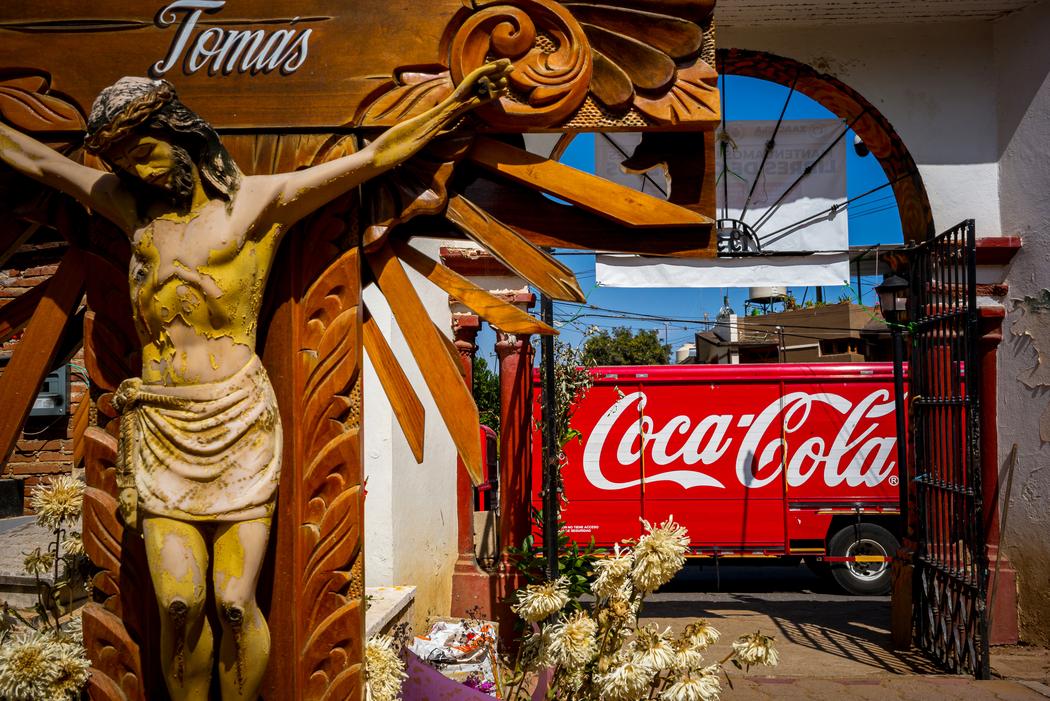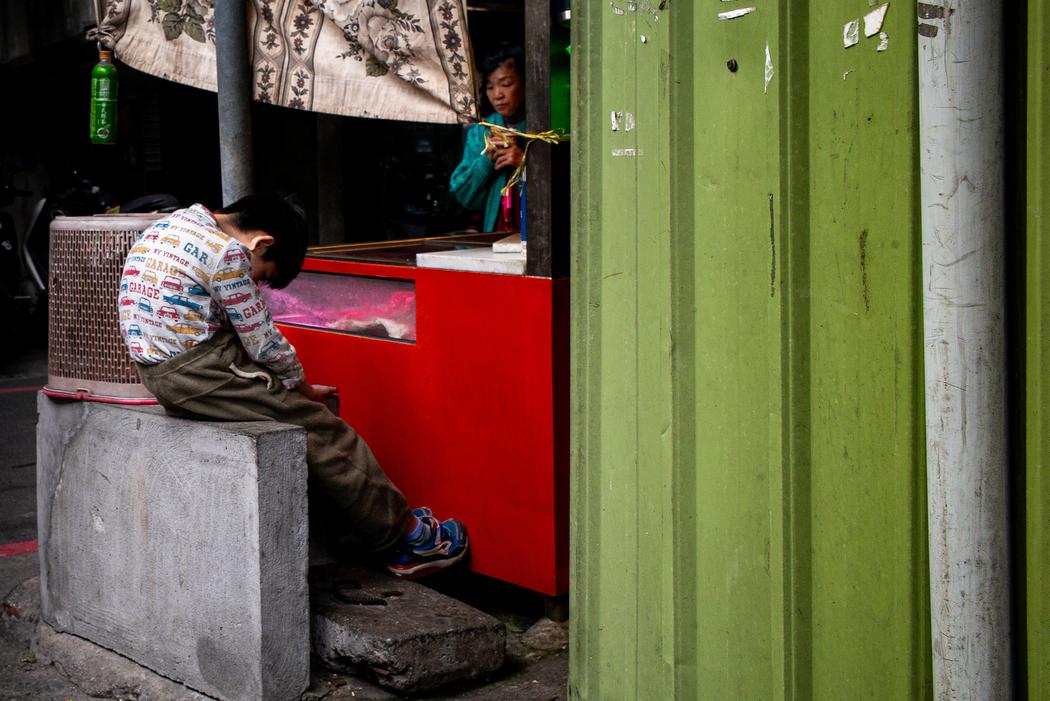Michael Lemon
Year of birth: 1970
Where do you live: Global citizen
Your education: Degree in Commercial Photography, Master’s Degree in International Business
Describe your art in three words: In the moment.
Your discipline: Photography
Instagram
 Michael Lemon | Divine Shadow
Michael Lemon | Divine Shadow
Your photographs are rich in color and layered storytelling. How do you approach composing a frame in the streets?
Lighting, lighting, lighting. For me, all of the framing, layering, and rules of composition are irrelevant if the lighting is not good. So, I’m always chasing the light first and foremost. I love images that have multiple layers or that are compartmentalized. It allows you to break the image up into multiple stories, so I’m always looking for layers or ways to frame within the frame. In building depth, I tend to work from the background first, to middle and then foreground. Sometimes all three layers already exist, and you just need to position yourself to frame them. More often you need to build the layers. In this case I search for a good background, a place that is not too cluttered and allows the subject to stand out. I then start framing the background, deciding what to include, looking for clarity and avoiding tangents. I previsualize where I want my main subject to be and then wait for the middle and foreground elements to come into frame. I can spend hours in front of a good background, waiting for the right subject to complete the frame.
You mention being influenced by painters like Francis Bacon and Edward Hopper. In what ways do these influences show up in your photography?
Being inspired and compared to other photographers is inevitable, so I try to garner a greater influence from traditional painters. I’m greatly inspired by Francis Bacon’s use of vibrant and intense primary colors, juxtaposed with muted cooler colors. This contrast builds depth. Also, his spatial use of color to compartmentalize a subject or separate it from the background. With Hopper, I have always admired his compositions, his ability to transform a mundane everyday scene into a stunning graphic image. I have spent a great deal of time studying his use of leading lines, of dark and light, and his ability to flatten a plane while still creating depth.
 Michael Lemon | Call For Coffee
Michael Lemon | Call For Coffee
After a long career in advertising, what was the most difficult or liberating part about transitioning to photography full-time?
I think the most difficult part for me has been deciding what subject matter to photograph, to find a long-term project that I can immerse myself in. With advertising, there was always a client-based project that you were shooting for. For now, I’m just shooting random street photography with zero direction. As great as it may sound to have the freedom to shoot whatever you like, I do find it challenging. I want to create images that have more meaning than random snapshots. I’m not there yet. Liberating, that is an understatement. For myself there is no greater feeling than when I’m on the street with my Leica in hand and I’m seeing the world frame by frame.
Many of your photos capture fleeting, almost accidental moments. How do you train your eye to catch these?
I go back to the adage of ” Luck is when preparation meets opportunity “. It’s all about putting yourself in the right spot for when the opportunity or decisive moment happens. For example, the Holy Cola image was taken in a cemetery. As I was leaving the cemetery, I noticed a Coca Cola truck down the street doing deliveries. Being a one-way street, I knew the truck would have to pass by me, so I precomposed the image and waited for the truck. It goes back to how I compose images by starting with a good background and waiting for the elements to complete the image. Beyond that, it really is about being aware of your surroundings and what”could” happen. Another example, in Latin America, people are very passionate and greet each other with hugs or hardy handshakes. Knowing this, you can anticipate a meaningful moment that makes a great image. On the technical side, my camera is always set using a zone focus range, so I don’t miss a shot and I’m always looking down the street to see what’s coming.
 Michael Lemon | Holy Cola
Michael Lemon | Holy Cola
Color seems to be a central theme in your work. How do you use it as a narrative tool?
I started shooting long before digital photography and shot mostly on Kodachrome, which is known for its vibrant and saturated colors. This is probably why color is such a large part of my work. Color photography is so often used to capture the world precisely as it is. I want to push color to a point where the viewer questions if the image is real. I use light and shadow, strong blocks of color to guide the viewer towards the subject. I do very little postproduction work to the images, I’m very adamant that I stay true to what could have been achieved with film.
You’ve lived and worked in diverse locations like Asia and Mexico. How have these environments shaped your visual language?
Visually, being tropical, light and color are embedded in the cultures of Asia and Latin America. With such searing light, strong shadows and vibrant colors, I see things in an almost graphical design sense. I break compositions down into graphic elements and shapes. Both locations are densely populated and congested. This can be both good and bad for a photographer. On the upside, there is always chaos and something to shoot, on the downside scenes can be too busy with too much clutter. It shapes how you frame images, what you include or leave out. It also shapes how you interact with people.
 Michael Lemon | Dirty Cars
Michael Lemon | Dirty Cars
You say your photos are evidence that you were ‘aware of a moment in time.’ Do you see photography more as documentation or personal expression?
I don’t see the difference, or perhaps they go hand in hand. As photographers we document what we see. I would say, for the most part we have no control over how a scene unfolds, unless of course we are interacting with the subject. What we do have control over is how we create the image, how we choose to express what we see through composition and framing, color and lighting. No matter how hard a photographer tries to simply document a scene, it will always be their personal expression of the scene.

Leave a Reply
You must be logged in to post a comment.